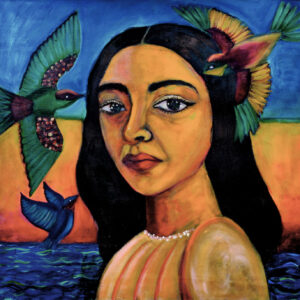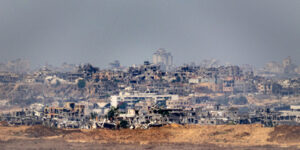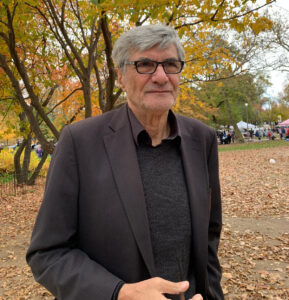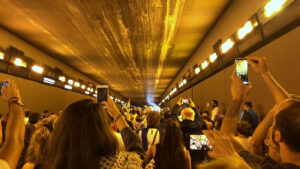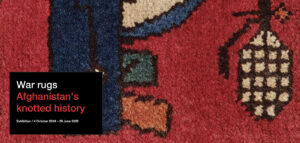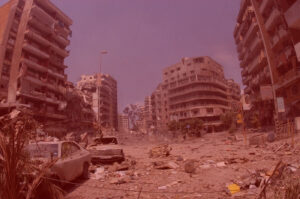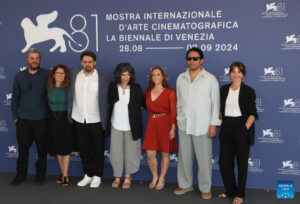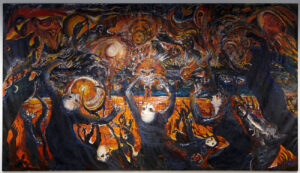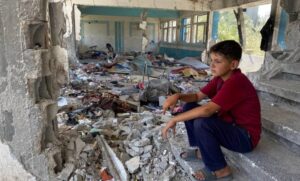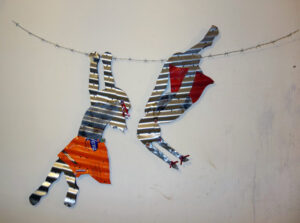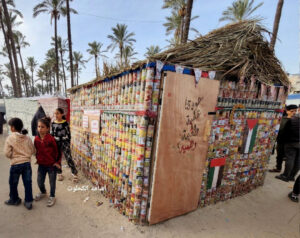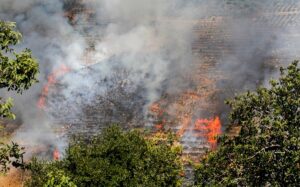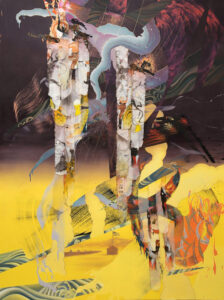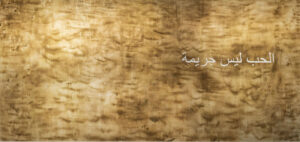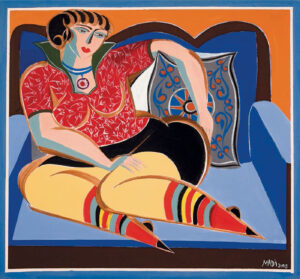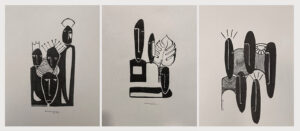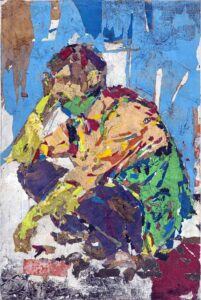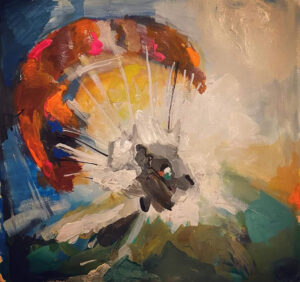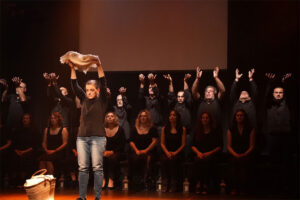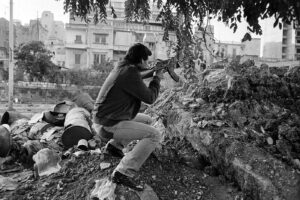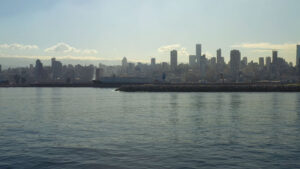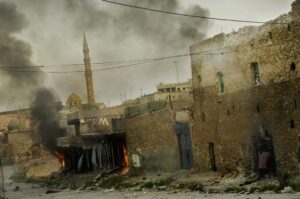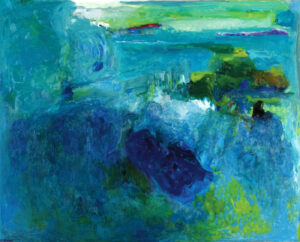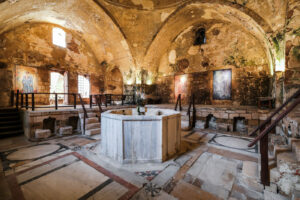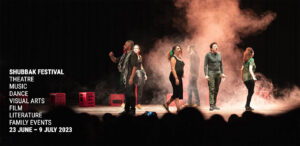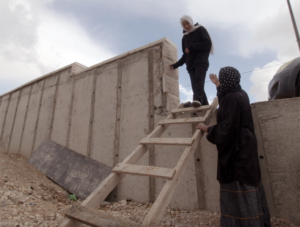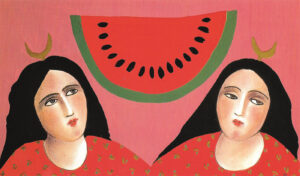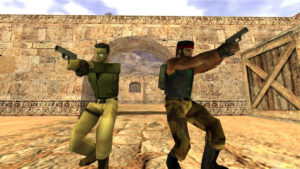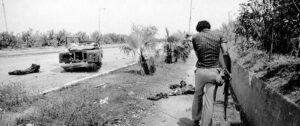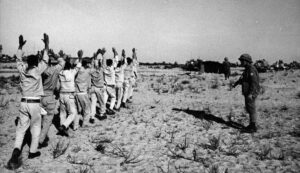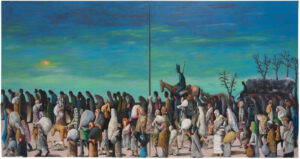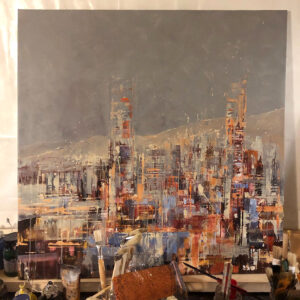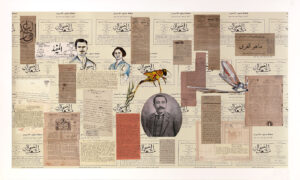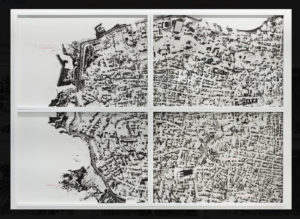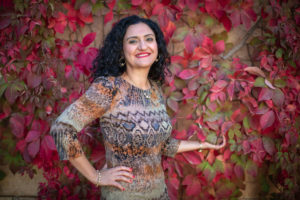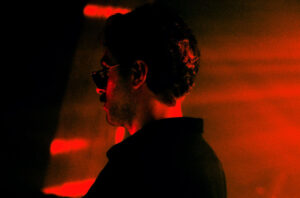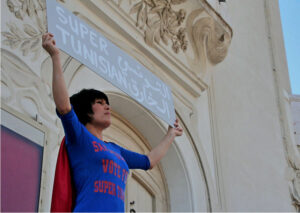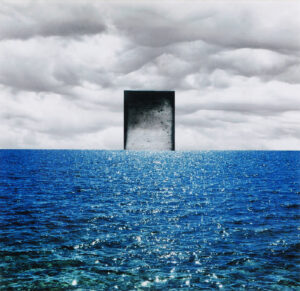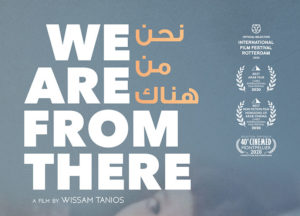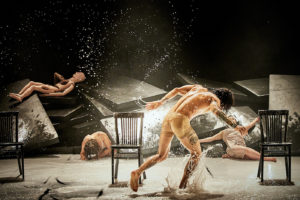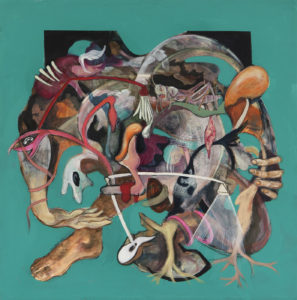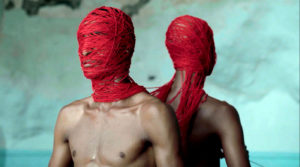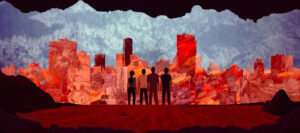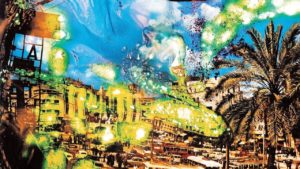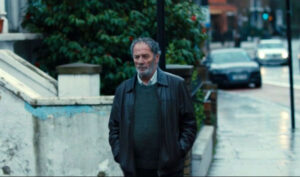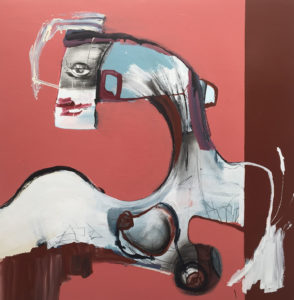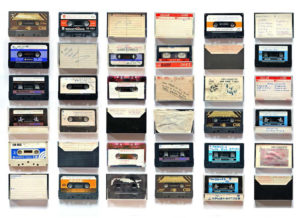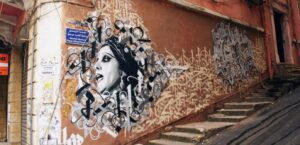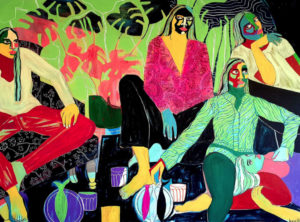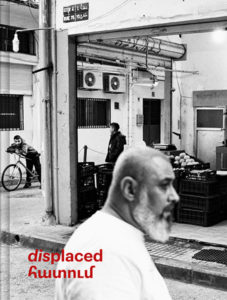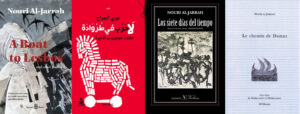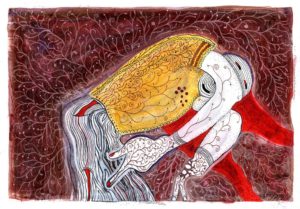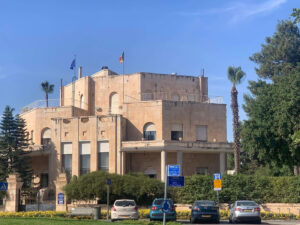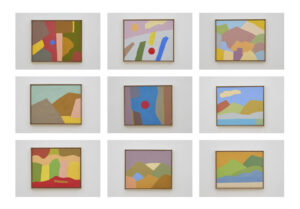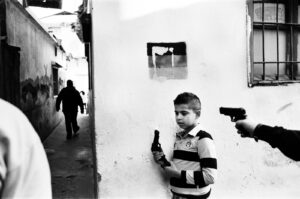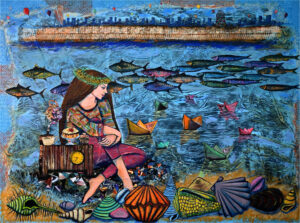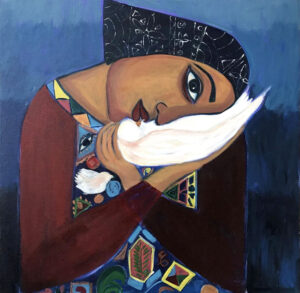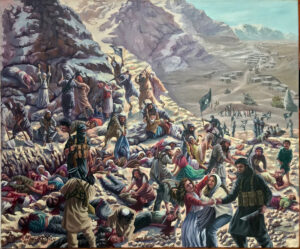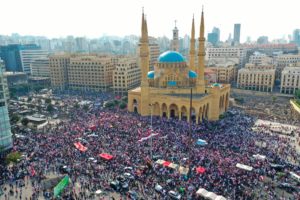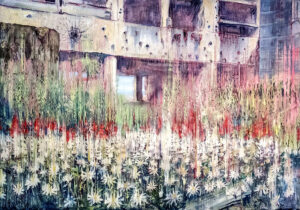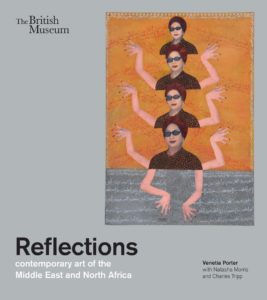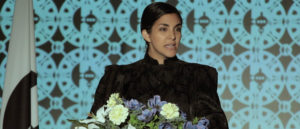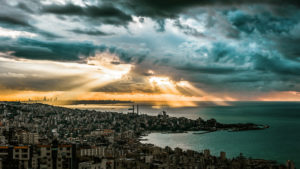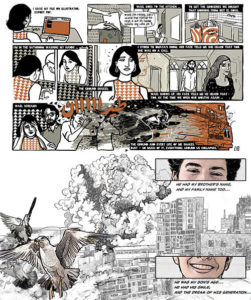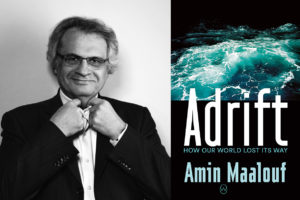Women’s War Stories: The Lebanese Civil War, Women’s Labor and the Creative Arts
Edited by Michelle Hartman and Malek Abisaab
Syracuse University Press, 2022.
ISBN: 9780815637820.
Evelyne Accad
The main purpose of Women’s War Stories: The Lebanese Civil War, Women’s Labor and the Creative Arts — the constituent stories of which were related orally, mostly in Arabic, to editors Michelle Hartman and Malek Abisaab, who then translated them — is to express the complexities of women’s lives as related to war and trauma, and to highlight the importance of storytelling in examining history. How were women in Lebanon able to survive and transcend the horrors of their daily lives? With some, it was through art — for example, writing or filmmaking. With others, it was through undertakings such as tobacco farming. This is where the originality of this collection comes to the fore: the decision to highlight storytelling is not found in other books about the Lebanese conflict. The use of language is analyzed at length, particularly in light of much of the literature on the Lebanese Civil War being in English. Indeed, aside from exploring pressing political and ethical issues, the editors/translators examine the importance of translation and what it entails in the way of responsibility and engagement.
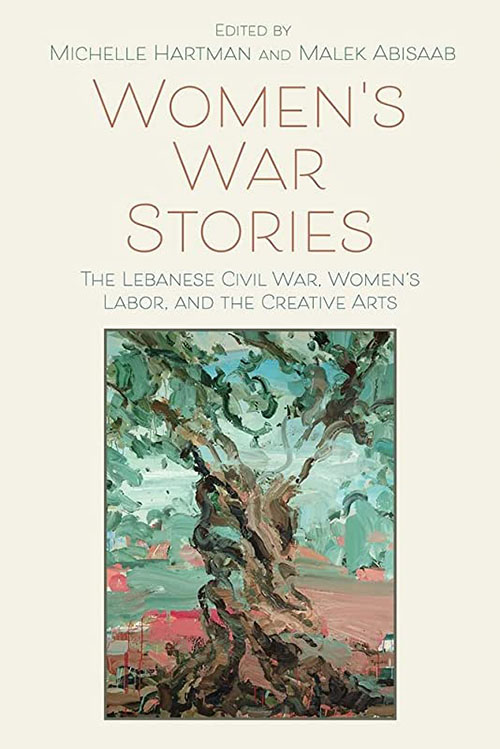
From the book’s title, one could not guess that Hartman and Abisaab would have chosen the kinds of stories they did, namely: “Tobacco Workingwomen’s Experiences and Life Struggles,” by Abisaab; “The Labor of Women’s Resistance: Image, Narrative, Alternative Futures,” by Mary Jirmanus Saba; “ ‘I Was Beirut’: Seta Manoukian and Art as Therapy During and After the Lebanese Civil War,” by Nova Robinson; “Disaster Seen by Three Female Contemporary Lebanese Artists,” by Yasmine Nachabe Taan; “Warring Body: Art and Life in Lina Majdalanie’s Appendice,” by Zéna Meskaoui; and “Truth, Fiction, and Leaving the Page Blank: Women and the Sabra and Shatila Massacre,” by Hartman. It’s a pleasant surprise to notice that active and “engaged” women were chosen as contributors. And, interestingly, the “stories” or testimonies related in the collection are quite original and creative in nature, and serve to illuminate little-known aspects of the important topic of women and war.
That said, I would disagree with Hartman and Abisaab’s claim that there are very few books at all that relate such narratives. Indeed, I can point to titles dealing with such topics in other contexts. The claim to uniqueness, along with the absence of an index, is the chief weakness of this otherwise excellent collection.
Of the different voices and perspectives here, the standouts are Mary Jirmanus Saba’s in “The Labor of Women’s Resistance: Image, Narrative, Alternative Futures” and Nova Robinson’s in“ ‘I Was Beirut’: Seta Manoukian and Art as Therapy During and After the Lebanese Civil War.” In addition to looking further back in time, Saba subtly analyzes images of women used during the Lebanese uprising of 2019, and demonstrates how one must read between the lines of the usual patriarchal ways of seeing women — particularly as mothers. Nova beautifully narrates how art was used as therapy for Lebanese and Palestinians during the conflicts that have ravaged Lebanon. Unusual and memorable about Nova’s chapter is Manoukian’s spiritual quest involving Buddhism, a phenomenon we do not commonly associate with Lebanese experiences.
In their perceptive introduction, the editors bring out the important socioeconomic context of these collected works. For example, we learn that even in the 1950s, supposedly the apogee of Lebanon’s achievements, the “golden opportunities” to be found in the country benefited only 4 per cent of its population. This means that by the time the war broke out in 1975, a large portion of the population was already alienated from the government. Moreover, given that postwar Lebanon came to be governed by the same people who had led wartime factions, vital and topical questions about this ruling mafia, and about the total collapse of the economy and major structures of society under its watch, beg consideration. The more these questions are pondered by ordinary Lebanese, the more we might hope that, even in the midst of the injustices the people of Lebanon face today, we can find a way to remedy the situation. We just have to start by identifying the culprits.
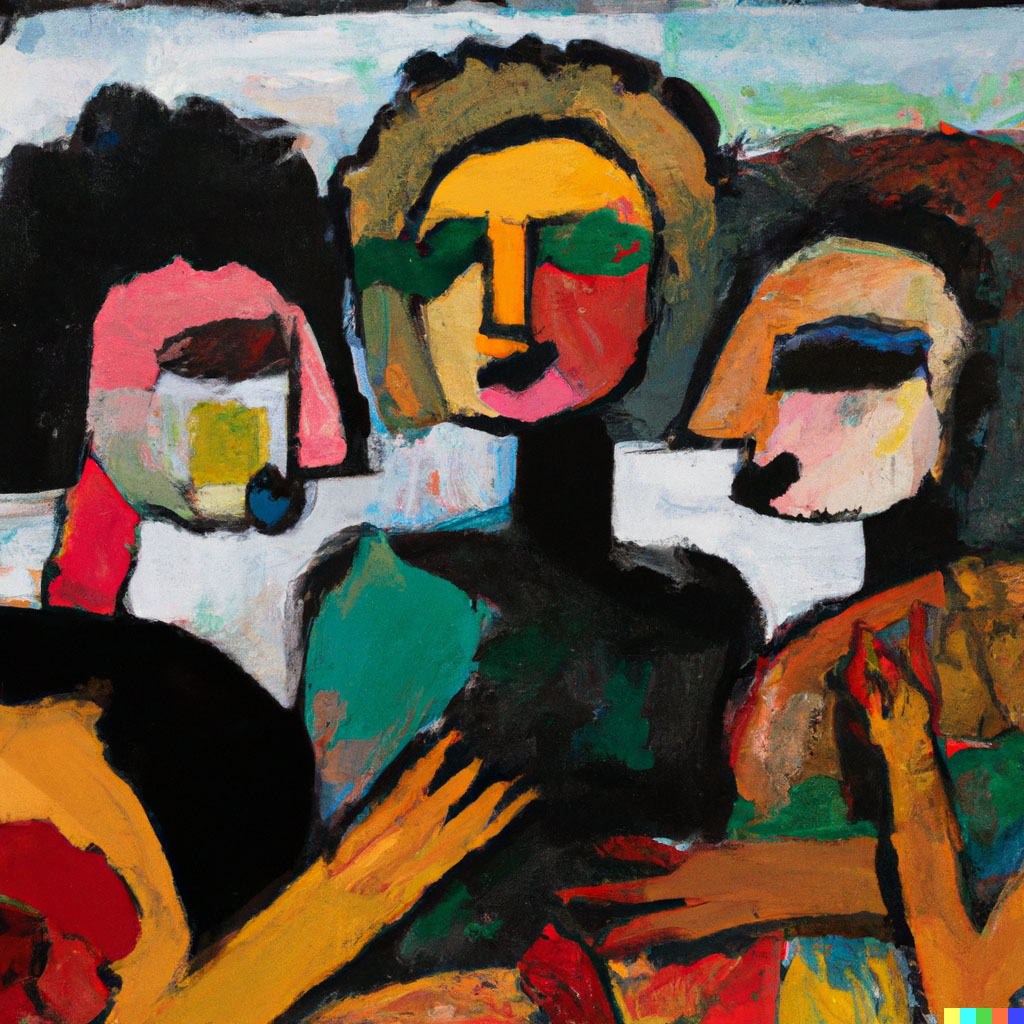
On the subject of questions, the editors discuss an intriguing one regarding what to include and what to leave out. Conscious of the importance of certain topics, they include stories that revolve around some of the most notorious and tragic incidents of the war, such as the massacres of Tell El Zaatar and Sabra and Shatila, but there are also stories about lesser known aspects of the 15-year-long conflict. Indeed, Hartman and Abisaab sensitively examine the scars and memories of what we might call small tragedies.
As mentioned, the editors claim that their collection fills a lacuna — that stories of women in their roles as fighters, protesters, workers, raising families, creators, and artists were almost non-existent. While it is true that neglected aspects of women in war are brought out in this collection, it is not true that, hitherto, such narratives by and about women could scarcely be found. Such a claim indicates a lack of thorough research, not only in sociological and historical fields, but also in literary, philosophical, political, and artistic ones. Yes, the editors do feature stories that put women at the center of the war, showing their creative production, and they do this amazingly well, but to claim that they are virtually the only ones to have done so is a little presumptuous, in my humble opinion.
Women’s War Stories would have benefited from extending some of its analysis to other Arab societies, but the editors made it clear that they were limiting themselves to Lebanon. This is quite understandable, as it is difficult to tackle many domains at once. All in all, I consider the book a worthy addition to an important field, that of women writing about war. There is much insight here into Lebanon — its culture, history, literature, national identity, and conceptions of gender roles. In a university setting, I would highly recommend it for women’s studies as well as courses on Arabic literature, and would also list it as complementary reading for classes on peace and non-violence, and even Middle Eastern history.



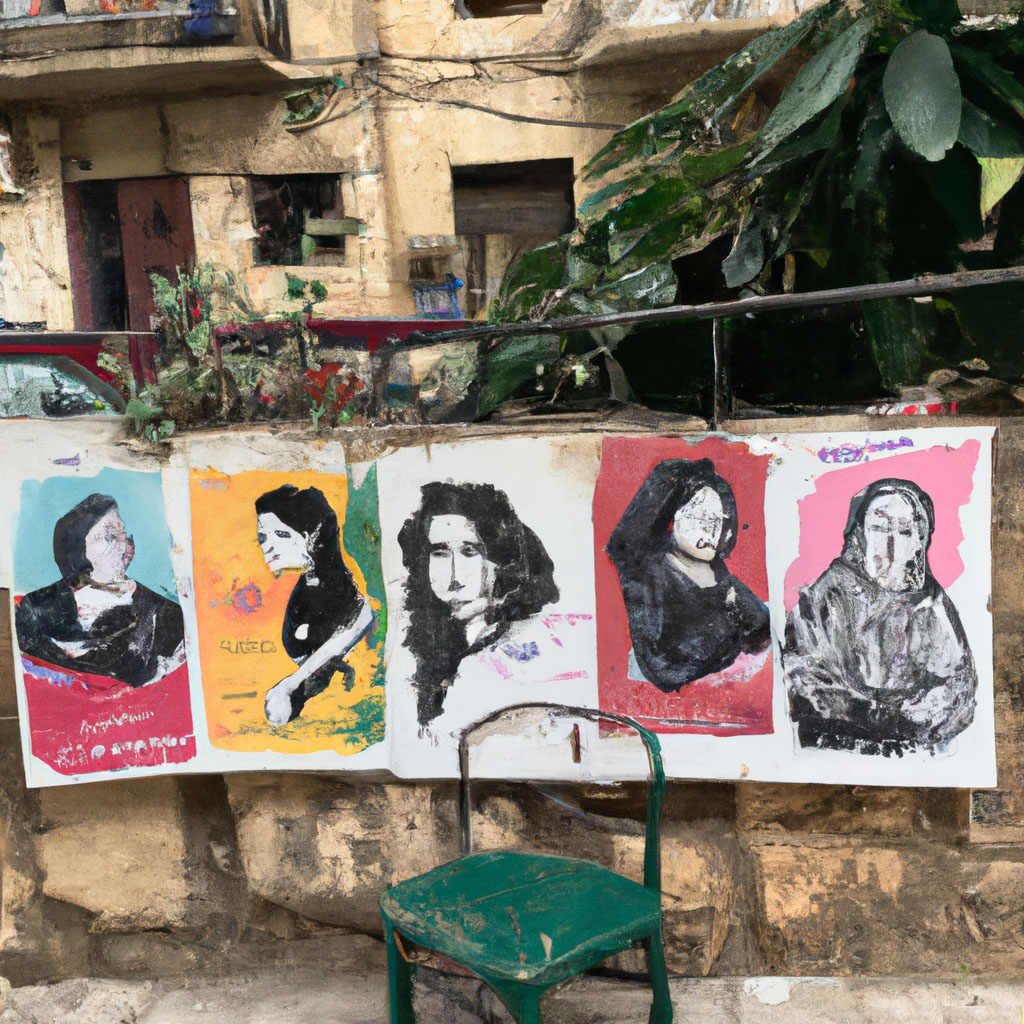

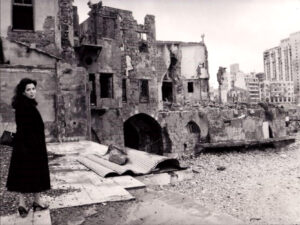

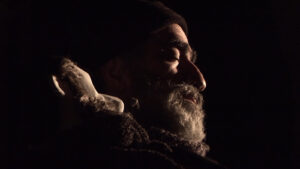
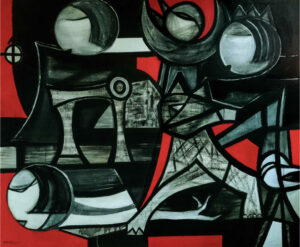
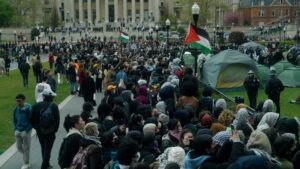
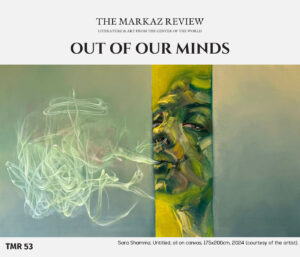
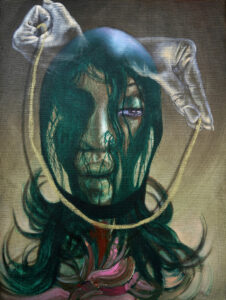
![Ali Cherri’s show at Marseille’s [mac] Is Watching You](https://themarkaz.org/wp-content/uploads/2025/09/Ali-Cherri-22Les-Veilleurs22-at-the-mac-Musee-dart-contemporain-de-Marseille-photo-Gregoire-Edouard-Ville-de-Marseille-300x200.jpg)

